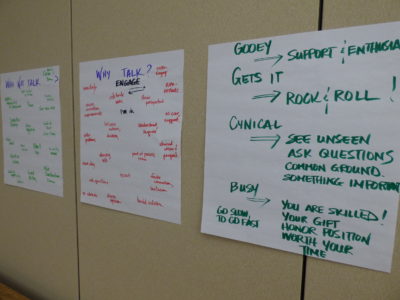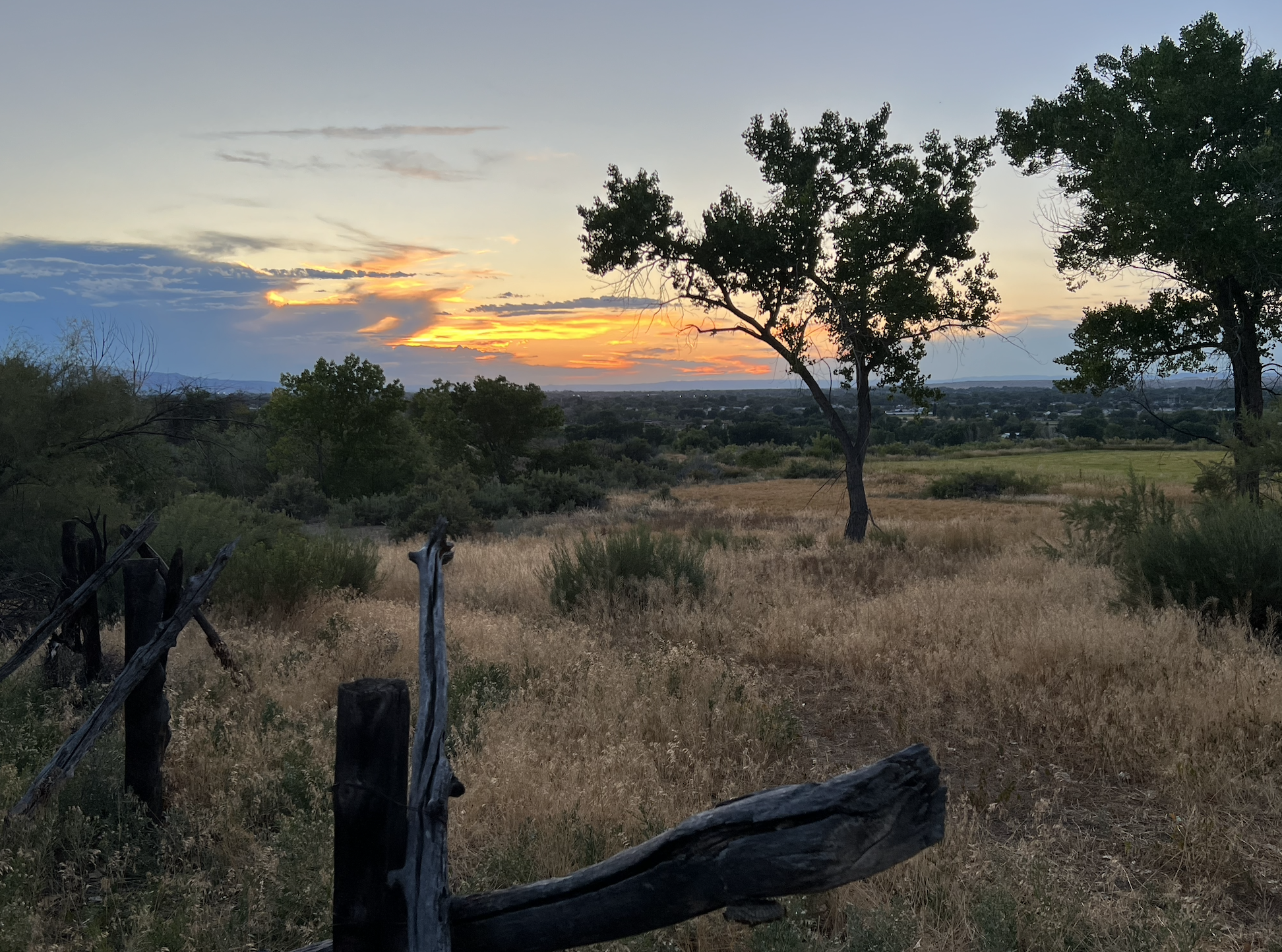
In working this week with Paul Horton (co-host) and a group of 25 public health leaders, I created an exercise called Why Talk. The version below was 45 minutes. I would love to try it in 90 minutes. My hope in offering “Why Talk” was to help people find more clarity on the story that they hold (or can choose) for hosting participative process.
Intro — I shared a story of a colleague who has been asking when to invite participation and when not to. I also shared the importance of underlaying story of participative leadership — reason and purpose that is beyond, “it’s nice.”
Private Journaling — I had them use a folded piece of paper to list five reasons that they know in themselves or that they’ve seen in others about why NOT to talk. Could be anything — takes too much time; makes me nervous, etc.
Partner Conversation about Why NOT Talk — I gave them five minutes. There was a lot of energy.
Popcorn Harvest — With the full group. I wrote their responses on a flip chart.
Private Journaling — On the next page of the folded piece of paper, list three reasons that are honest, succinct, and real about why talk. Again, could be anything — to get information, to build relationships.
Partner Conversation about Why Talk — Different partner than the first time.
Popcorn Harvest — As before. However, I realized that I wanted a bit of further nuancing. I asked them about “why engage with a group” to see if that would shift responses. People generally felt it did — shifted the attention from personal to the value of the group, which is really what I was hoping to bring forward.
Further Prompts — I asked what their description would be with particular personalities. Why engage with the group when you are talking with someone who really gets it. With someone who is really cynical. With someone who is really busy. With someone who is really gooey appreciative. Trying to help participants identify what is honest for them.
Four Pillars — I offered what I have found to be my most helpful versions of Why Talk, or Why Engage The Group.
People support what they create. This is a principle that starts to lead to action. It’s easy to get that people want to act together. People want to do good. Talking together creates essential condition for that action to occur in a more sustainable way. So does listening. So does harvesting.
Who we are together is different and more than who we are alone. This is one that I learned over and over with Margaret Wheatley. Since the early 90s she has been encouraging people to see systemically, knowing that engagement with one another gives us access to the magic, or difference, of who we are together. It is a person of “the whole is greater than the sum of the parts.”
If you want a system to be healthy, connect it to more of itself. This is a biological principle that I connect back to Humberto Maturana, the Chilean biologist and philosopher. Talking and listening are part of that, right. Telling stories. Sharing observations. Asking questions of each other. To create a healthy system, which is the work of leadership.
If you want to go faster, go alone. If you want to go further, go together. This is an African proverb that I learned in my early days with The Berkana Institute, where we were encouraging process to help us go together. To help us remember a kind of belonging together. Talking, listening, harvesting creates belonging.
It was fun to create this and offer it. Helping people move a litter further from imposing a set of tools to understanding a story on which to clarify intent and that have freedom to create and use tools with more purpose.
